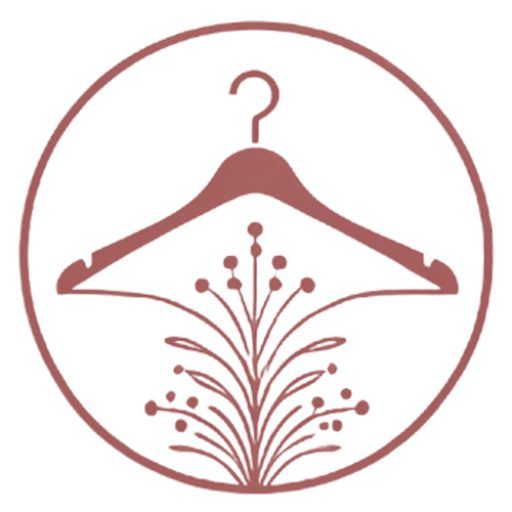Have you ever looked at your closet and wondered where your clothes came from? Not just the store or brand, but the people behind the pieces—the hands that stitched your favorite sweater or the factory where your go-to jeans were made? For many of us, the journey from fabric to fashion is a mystery. But as conversations around sustainability and ethical fashion grow louder, more people are beginning to rethink their approach to shopping. One powerful way to align your wardrobe with your values is by building a capsule wardrobe with ethical brands.
I’ll admit, my journey into ethical fashion wasn’t immediate. Like many, I was drawn to fast fashion for its affordability and accessibility, but I often felt disconnected from the clothing I owned. Once I started learning about the impact of the fashion industry—on workers, the environment, and even my own mindset—I knew I needed to make a change. Today, my capsule wardrobe isn’t just a reflection of my personal style; it’s a commitment to supporting brands that prioritize people and the planet.
About the Author and My Trend Boutique
In this guide, we’ll explore how to build a capsule wardrobe using ethical brands. From understanding what makes a brand “ethical” to curating timeless, versatile pieces that align with your values, this post will show you how to shop intentionally and stylishly.
Why Build a Capsule Wardrobe with Ethical Brands?
A capsule wardrobe is a natural fit for ethical fashion. The goal of a capsule wardrobe is to own fewer, better-quality pieces that work seamlessly together—values that align perfectly with the principles of slow fashion and conscious consumption. Here’s why this approach matters:
1. Reduces Overconsumption
By focusing on quality over quantity, you break the cycle of buying cheap, trendy pieces that wear out quickly. Ethical brands often create durable clothing that lasts for years, reducing waste.
2. Supports Fair Labor Practices
Many ethical brands prioritize fair wages, safe working conditions, and transparency in their supply chains, ensuring that the people who make your clothes are treated with dignity and respect.
3. Minimizes Environmental Impact
Ethical brands frequently use eco-friendly materials, sustainable production methods, and minimal packaging to reduce their carbon footprint.
4. Encourages Thoughtful Style
When you build a wardrobe with intention, every piece feels meaningful. You’ll develop a deeper appreciation for your clothing and the stories behind it.
For me, shifting to ethical brands not only changed how I shopped but also how I felt about my wardrobe. I no longer saw clothes as disposable trends but as investments in quality, craftsmanship, and humanity.
What Makes a Brand Ethical?
Before diving into your capsule wardrobe, it’s important to understand what to look for in an ethical brand.
1. Fair Labor Practices
- Does the brand ensure safe working conditions and pay fair wages to its workers?
- Is the supply chain transparent, with certifications like Fair Trade or SA8000?
2. Sustainable Materials
- Look for fabrics like organic cotton, Tencel, hemp, or recycled materials.
- Avoid harmful processes like excessive water use or toxic dyeing methods.
3. Eco-Friendly Production
- Ethical brands often prioritize low-waste manufacturing and renewable energy.
- Certifications like GOTS (Global Organic Textile Standard) or OEKO-TEX can signal sustainable practices.
4. Animal Welfare
- Vegan brands avoid animal-derived materials like leather or wool.
- Brands that do use animal products should source them responsibly (e.g., cruelty-free or recycled leather).
5. Transparency
- Ethical brands are open about their practices, supply chains, and sustainability goals.
- If it’s hard to find this information, it’s worth asking why.
Step 1: Assess Your Current Wardrobe
Before purchasing anything new, start by evaluating what you already own.
1. Declutter
- Donate or sell items that no longer fit your style, lifestyle, or values.
- Keep pieces that are versatile, high-quality, and make you feel confident.
2. Identify Gaps
- Do you need more basics like T-shirts or tailored trousers?
- Are there specific items—like outerwear or shoes—that align with ethical brands you admire?
Step 2: Curate Your Capsule Wardrobe
A capsule wardrobe built with ethical brands should include timeless, versatile pieces that work for your lifestyle. Here’s a guide to get started:
1. Tops
- Neutral T-Shirts: Look for organic cotton or Tencel options.
- Blouses or Button-Downs: Choose timeless cuts in sustainable fabrics.
- Layering Pieces: A versatile cardigan or lightweight sweater is a must.
2. Bottoms
- Jeans: Opt for brands that use recycled denim or water-saving techniques.
- Tailored Trousers: A polished pair that works for both casual and formal settings.
- Skirts: Midi or A-line styles are timeless and versatile.
3. Dresses
- A wrap dress or shift dress in a neutral color is perfect for any occasion.
- Choose pieces made from organic cotton, linen, or eco-friendly viscose.
4. Outerwear
- A classic trench coat or wool coat (ethically sourced) is a smart investment.
- Puffer jackets with recycled down or synthetic fill are great for colder months.
5. Shoes
- Vegan leather or sustainably sourced leather flats, boots, and sneakers.
- Look for brands that prioritize durability and comfort.
6. Accessories
- Tote Bags or Backpacks: Made from recycled or eco-friendly materials.
- Scarves or Hats: Ethically produced wool or organic cotton adds a touch of luxury.
Step 3: Research Ethical Brands
Here are some highly regarded ethical brands to consider for your capsule wardrobe:
Clothing
- Everlane: Known for transparency and affordable basics.
- People Tree: A pioneer in Fair Trade fashion.
- Thought: Focused on sustainable materials and timeless designs.
Denim
- Outerknown: Offers sustainable denim with a laid-back aesthetic.
- Boyish: Creates jeans with recycled fabrics and low-impact processes.
Shoes
- Allbirds: Uses natural materials like merino wool and eucalyptus.
- Nisolo: Combines ethical craftsmanship with stylish designs.
Accessories
- Matt & Nat: Vegan bags made from recycled materials.
- Pact: Organic cotton essentials, including socks and underwear.
Step 4: Shop Intentionally
When buying new pieces, ask yourself:
- Does this align with my color palette and style?
- Can I wear this with at least three other items in my wardrobe?
- Will I love this piece five years from now?
Tips for Budget-Friendly Ethical Shopping
- Look for sales or “choose what you pay” programs (like Everlane offers).
- Explore secondhand options for ethical brands on sites like Poshmark or ThredUp.
- Build your wardrobe gradually—ethical pieces are an investment, so there’s no need to buy everything at once.
Step 5: Maintain Your Capsule Wardrobe
1. Care for Your Clothes
- Wash less frequently and use cold water to preserve fabrics.
- Repair small damages instead of replacing items.
- Store pieces properly to prolong their lifespan.
2. Rotate Seasonally
- Swap out summer and winter pieces to keep your wardrobe fresh and functional.
3. Reassess Regularly
- Review your wardrobe every few months to ensure it still reflects your needs and values.
Picture Gallery








FAQs
1. What is the difference between ethical and sustainable fashion?
Ethical fashion focuses on fair labor practices and human rights, while sustainable fashion prioritizes environmental impact. Many brands overlap in both areas.
2. How many pieces should an ethical capsule wardrobe include?
Aim for 30–50 versatile pieces, but adjust based on your lifestyle.
3. Are ethical brands more expensive?
Ethical brands often have higher prices due to fair wages and sustainable practices, but their quality ensures longevity, making them cost-effective in the long run.
4. How can I ensure a brand is truly ethical?
Look for certifications (e.g., Fair Trade, GOTS) and read their transparency reports. If in doubt, contact the brand directly for more information.
5. Can I build an ethical wardrobe on a budget?
Yes! Start small, buy secondhand, and prioritize versatile staples over trendy items.
Conclusion
Building a capsule wardrobe with ethical brands is about more than just style—it’s a statement of your values and a commitment to a better world. By curating a wardrobe of timeless, versatile pieces from brands that prioritize fair labor, sustainability, and transparency, you’ll not only look good but feel good about your choices.
Remember, this journey doesn’t have to be perfect or immediate. Start small, shop intentionally, and celebrate every step you take toward a more ethical wardrobe. I’d love to hear about your favorite ethical brands or how you’re building your capsule wardrobe—share your thoughts in the comments or tag me on social media to show off your sustainable style! Together, we can make fashion a force for good.


